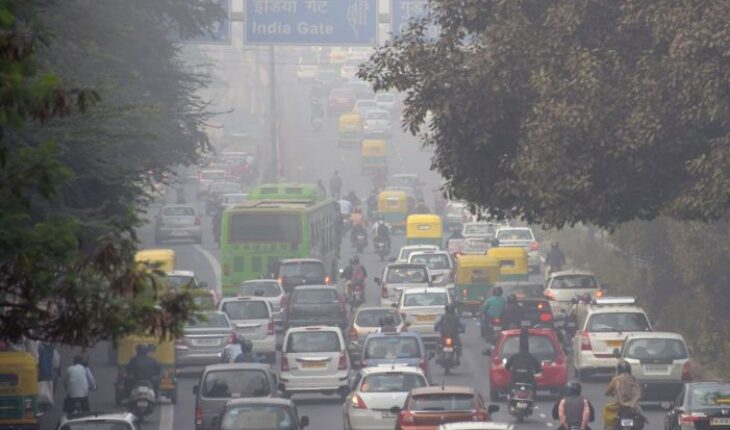New Delhi : Throughout January, Delhi grappled with persistent air pollution, exacerbating a crisis that had already been worsening since the previous year. Unfavourable weather conditions, including fog, calm winds, and low temperatures, contributed to the deterioration of air quality.
According to information from the Central Pollution Control Board (CPCB), the average monthly Air Quality Index (AQI) exceeded 350. In comparison, the AQI for January 2023 was measured at 311.
The AQI serves as a gauge for the concentration of harmful particulate matter PM2.5, known to induce cardiovascular and respiratory ailments such as lung cancer, within a cubic metre of air.
The categorisation of AQI ranges from 0-50 as ‘good, ‘ 51-100 as ‘satisfactory, ‘ 101-200 as ‘moderate, ‘ 201-300 as ‘poor, ‘ 301-400 as ‘very poor, ‘ and 401-500 as ‘severe.’ Any value surpassing 500 falls into the ‘severe-plus or emergency’ category.
However, the weather experts said that with two Western Disturbances in quick succession, the air quality is likely to improve in the coming days.
On the last day of the month, the air quality at Anand Vihar continued to be in the ‘severe’ category with PM2.5 at 407 and PM10 at 349, or ‘very poor’ while NO2 reached at 108 or ‘moderate’, as per the Central Pollution Control Board (CPCB).
The AQI monitoring station at Dwarka sector 8 recorded PM2.5 at 403, in the severe levels and PM 10 at 269, in the ‘poor’ category.
The AQI at Jahangirpuri was also in ‘severe’ levels with PM 10 reaching at 413 and PM 2.5 at 402. The CO was recorded at 110 or ‘moderate’.
The PM2.5 at Punjabi Bagh also reached 404, in the ‘severe’ category while PM10 was at 357, or ‘very poor’ and CO was at 126 or ‘moderate’.
The PM2.5 at Okhla Phase-II was recorded at 496 and PM10 at 486 — both in the ‘severe’ category. The NO2 was at 119 and CO was at 60, in the ‘satisfactory’ levels.
At Jawaharlal Nehru stadium station, in last 24 hours, the average AQI was recorded in severe levels with PM 2.5 at 405 while PM 10 at 362 or ‘very poor’ and CO was at 114 or moderate.
The average air quality at Mandir Marg station in the last 24 hours was also in ‘severe’ category with PM 2.5 at 404 and PM 10 at 330 or ‘very poor’. The NO2 was recorded at 113. At Mundka around 9 a.m., the AQI remained in the ‘severe’ category with PM2.5 at 423 and PM10 at 408.
However, at IGI airport station, the PM 2.5 was at 332, or ‘very poor’ while PM 10 was at 228, in the ‘poor’ category and CO was at 118 or moderate.
This winter season, for the third time, GRAP Stage III measures were implemented. Initially enforced from November 2 to 28, and then again from December 22 to January 1, these restrictions were reintroduced on January 14 following a deterioration in Delhi’s Air Quality Index (AQI) to 447, categorising it as “severe” but revoked on January 22.
The decision to lift GRAP Stage III was made by the CAQM due to the disruptive impact of these restrictions on a significant number of stakeholders and the general public. The move also considered the improvement observed in the average AQI in Delhi, according to the Commission for Air Quality Management (CAQM) official.




